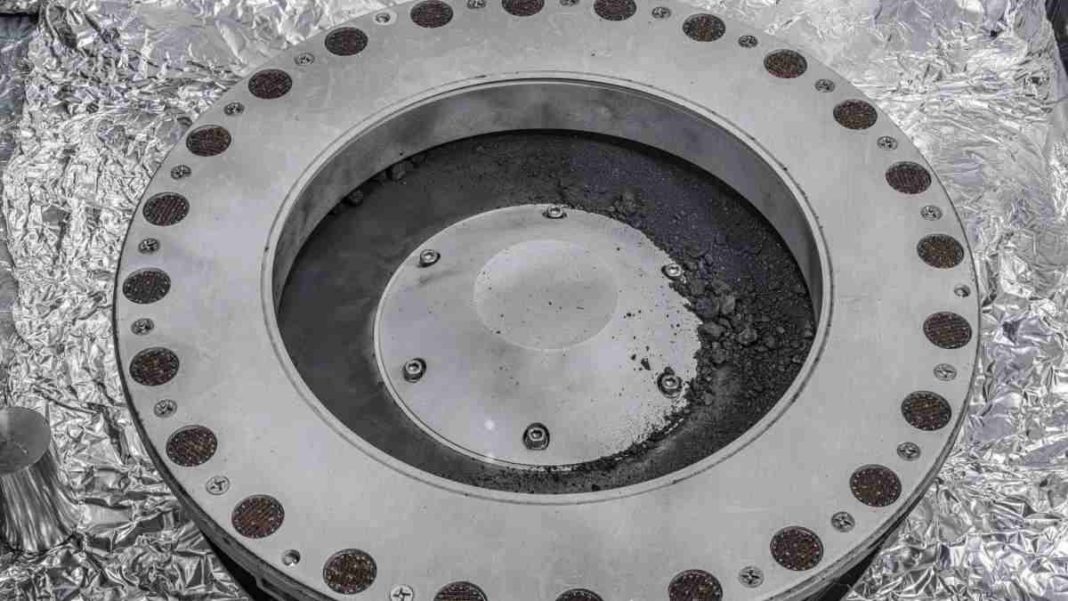UNITED STATES: In a recent announcement from NASA’s Johnson Space Center in Houston, the results of the initial analysis of samples collected from asteroid Bennu have scientists and the world buzzing with excitement.
The findings suggest that this 4.5-billion-year-old celestial body, which has been the focus of NASA’s OSIRIS-REx mission, is rich in carbon and water, raising intriguing questions about the potential for life beyond Earth.
The OSIRIS-REx mission, launched with the goal of collecting 60 grams of asteroid material from Bennu and bringing it back to Earth, has now delivered its payload.
NASA experts have been meticulously disassembling the equipment used to safely retrieve the sample. However, they encountered an unexpected twist: when they opened the sample canister, they found an abundance of “bonus” material covering the collector head, lid, and base.
This surplus material, while momentarily slowing down the collection process, has turned out to be a scientific treasure trove.
NASA Administrator Bill Nelson said in a press release that the OSIRIS-REx sample is the largest carbon-rich asteroid sample ever sent to Earth and would benefit researchers in their ongoing studies of the origins of life on our planet.
“At NASA, almost everything we do aims to provide answers to concerns concerning our origins and identities. By providing us with a view into the universe beyond, NASA missions like OSIRIS-REx will advance our understanding of asteroids that may pose a hazard to Earth. Even though the sample has returned to Earth, so much research remains to be done”.
The preliminary analysis, known as a “quick-look” assessment, provided astonishing evidence for the presence of carbon and water in the collected material.
This was achieved through the use of various analytical techniques, including scanning electron microscopy, infrared measurements, X-ray diffraction, and chemical element analysis.
Scientists employed X-ray computed tomography to create a 3D computer model of one of the collected particles, offering an even more detailed view of its composition.
The discovery of carbon and water in the asteroid sample has profound implications. It suggests that the fundamental building blocks necessary for life as we know it might exist on Bennu.
This realization opens a new chapter in our exploration of the cosmos, as it raises the possibility that life’s origins and evolution might not be unique to Earth but could occur elsewhere in our universe.
Also Read: Record-Breaking NASA Astronaut and Crew Return Safely from Epic Space Odyssey



